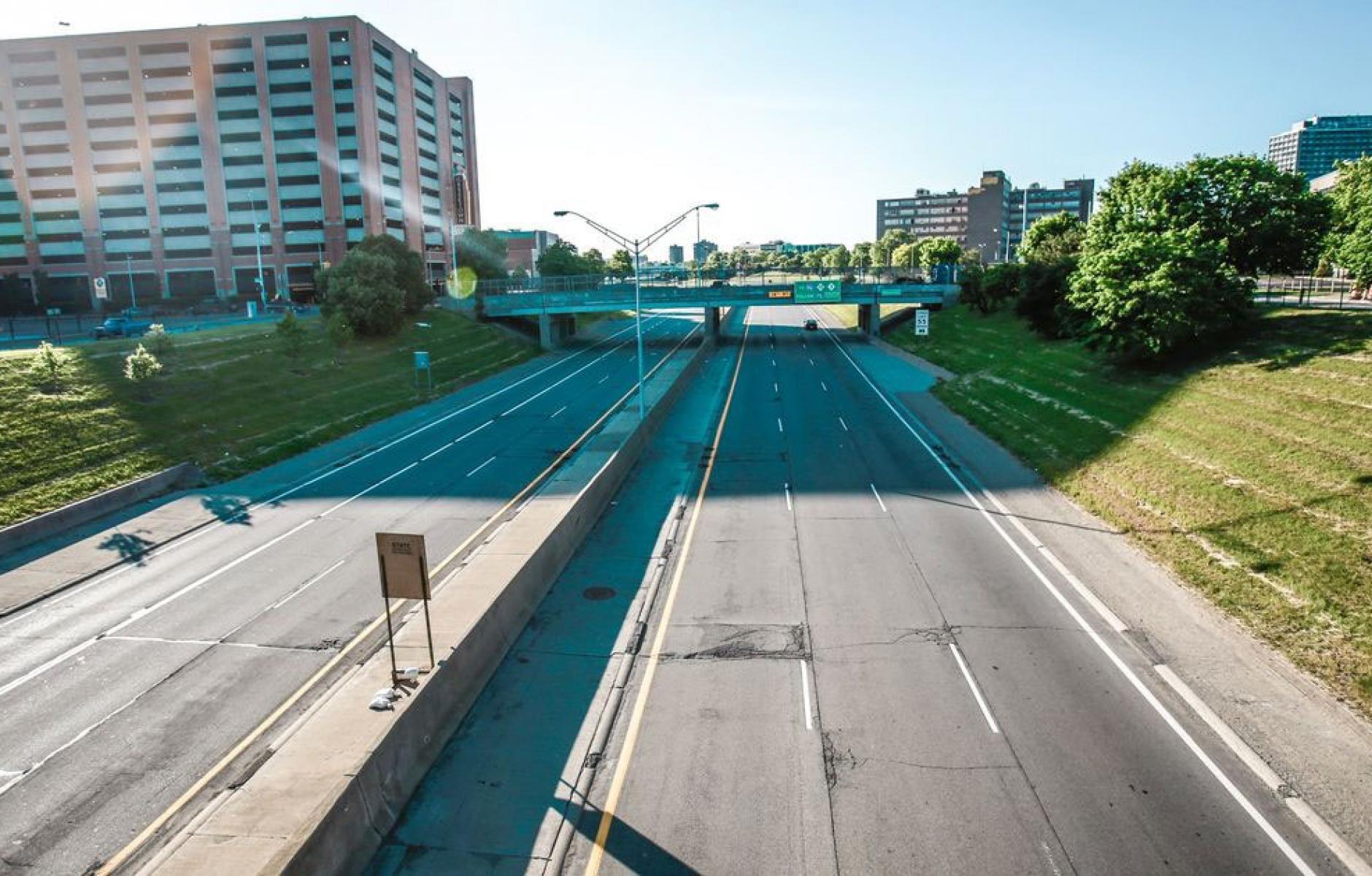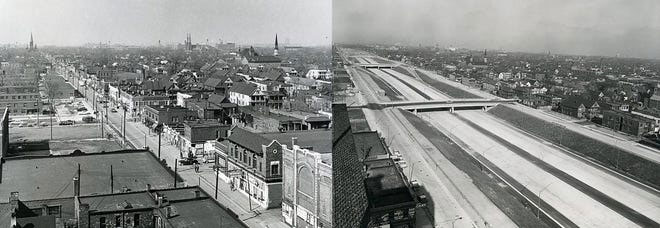
Looking to transform I-375 synergistically
Like many highways that have appeared on CNU's Freeways Without Futures list over the last decade and a half, I-375 in Detroit remains in place yet a source of controversy. Michigan DOT is still considering taking out the mile-long Interstate near downtown and replacing it with a surface street—but some of the proposals show a scarcely better road than an Interstate.
With a renewed federal interest in transforming in-city highways and the recent book Killed by a Traffic Engineer, the national dialogue may be shifting to allow new and better thinking on highway conversions. Over the weekend, a Detroit Free Press column explores the opportunities in a transformed I-375, using a new urbanist lens.
The writer, John Gallagher, highlighted the urbanism that had been demolished when I-375 was built in 1959. “After the freeway is actually raised to surface street level as the state plans, everyone agrees the newly available land, about 30 to 40 acres by some estimates, ought to pay tribute to the old Black Bottom neighborhood wiped out by urban renewal and the expressways decades ago.”

But that homage should not be merely symbolic, he writes. He quotes Mark Nickita, a Detroit architect with Archive DS and a prominent new urbanist, on how the infrastructure should foster connection and synergy. “It's hard to just place something on a site and hope for the best,” Nickita says. “You really need to think about connections.”
The buildings on both sides of the wide swath of highway and service roads hold little promise, Gallagher notes, including two large parking decks, isolated churches, and a criminal justice headquarters that will soon be vacant.
“None of it on either side of the existing freeway makes for attractive street life. Any hope of creating a vibrant, walkable district there needs to start from scratch.
This is why this I-375 re-do is so crucial, not just for moving traffic but for creating the kind of downtown we want and deserve in Detroit.”
In other words, Michigan DOT must build a street that reconnects the neighborhoods on both sides, fostering street life and sense of place.




